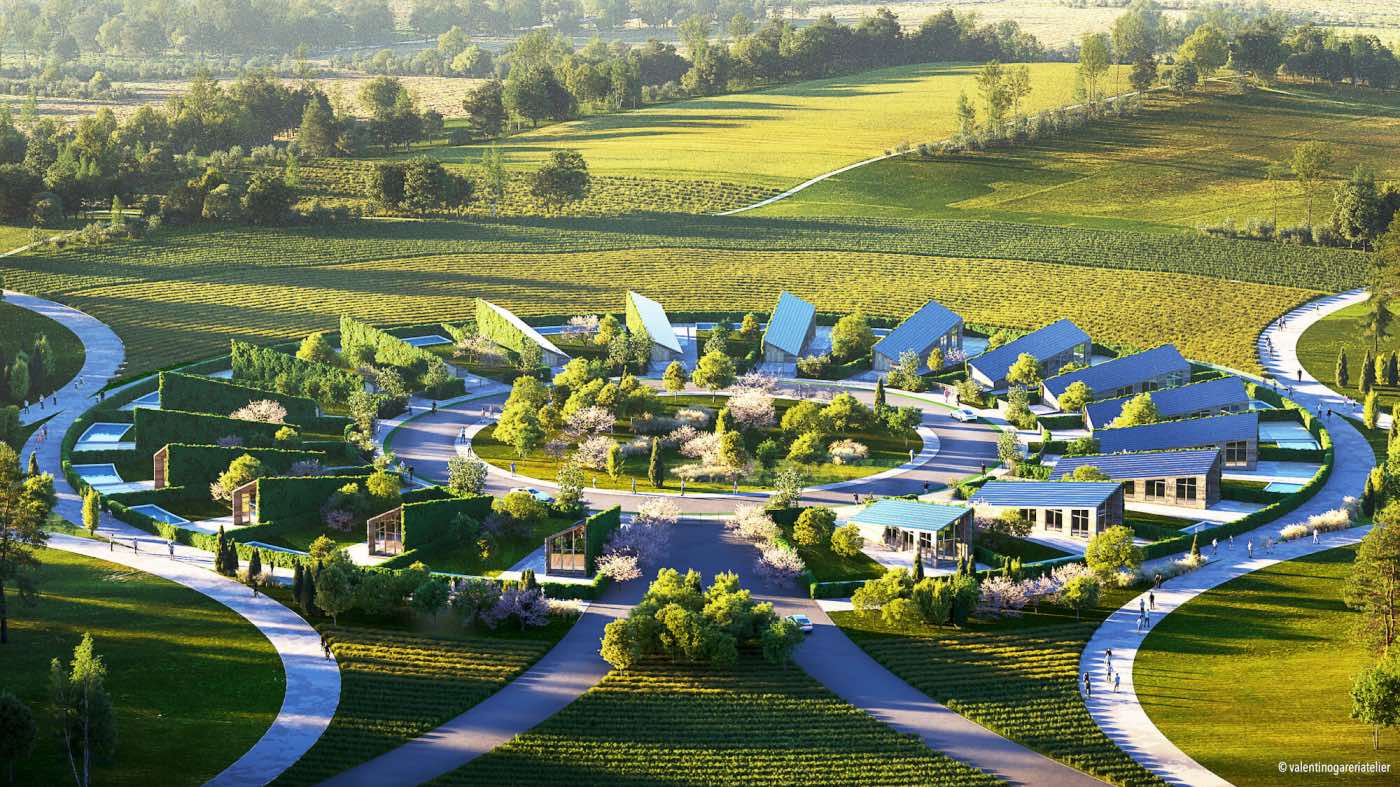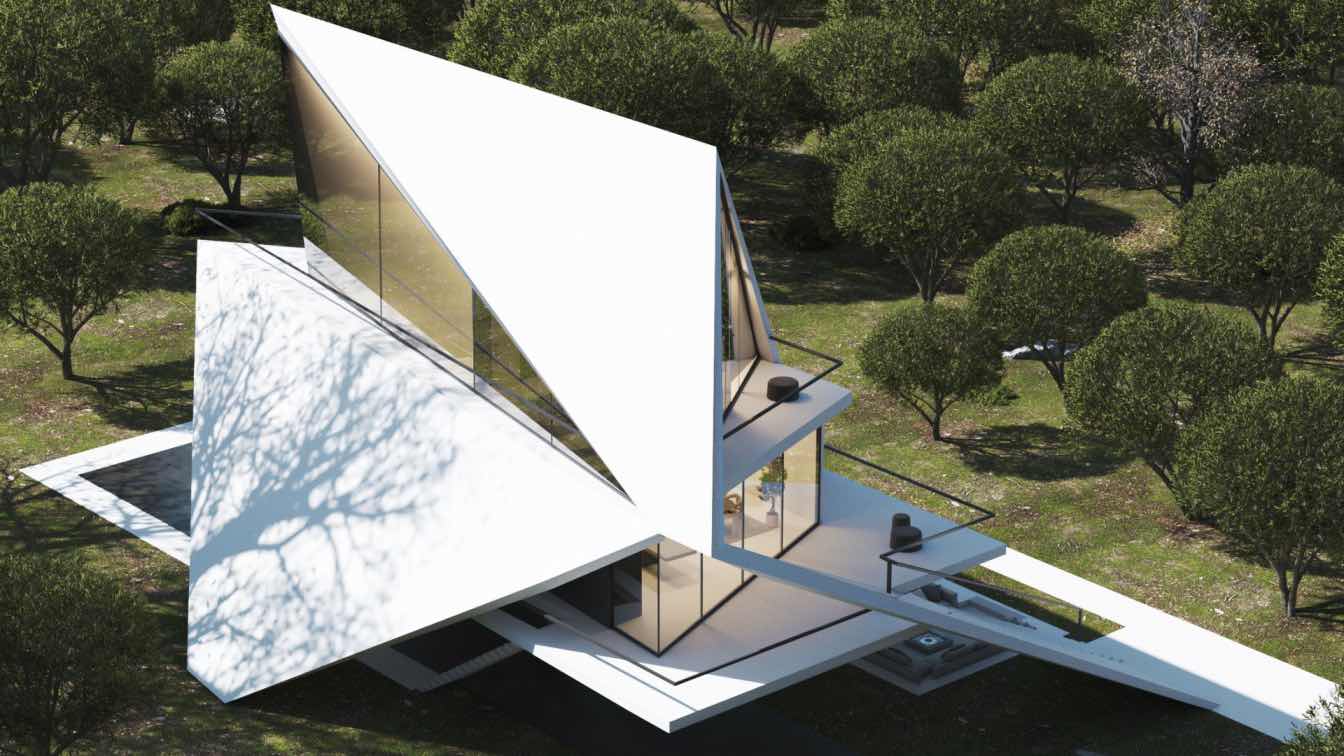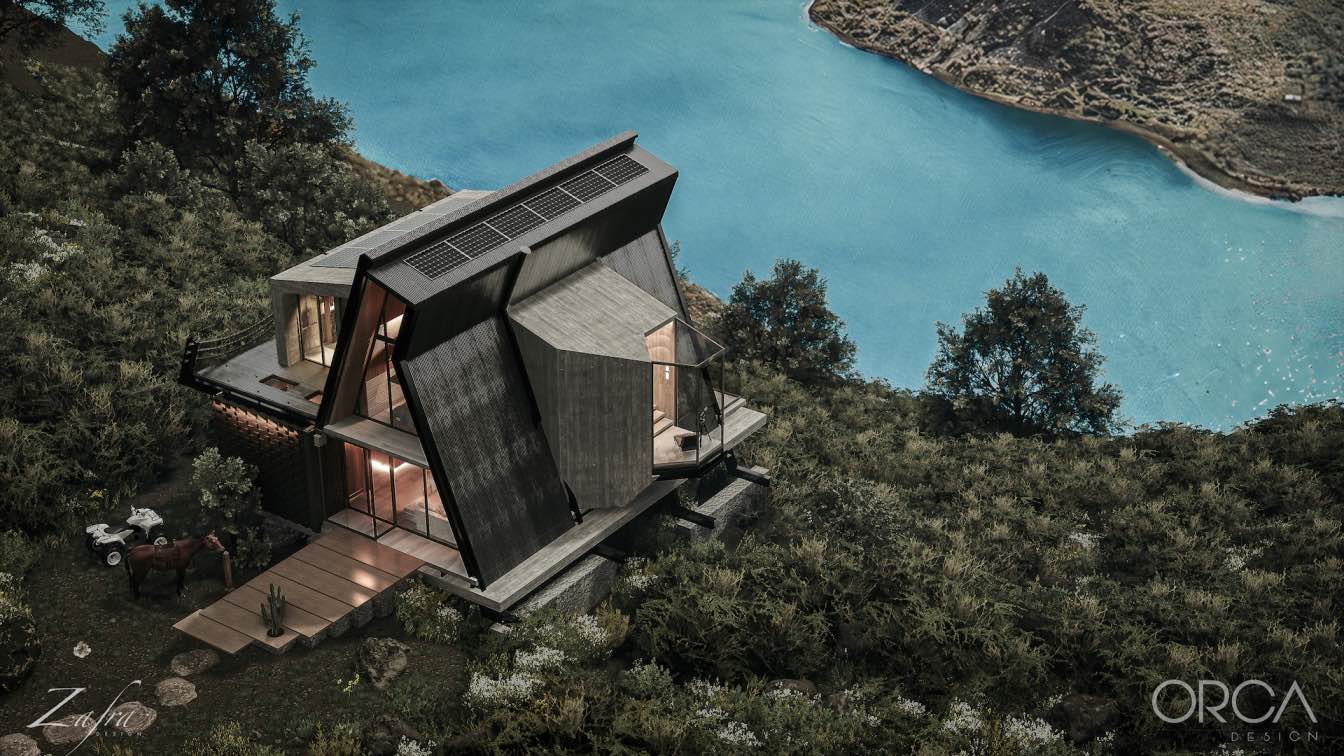Valentino Gareri Atelier: SUNFLOWER VILLAGE: TOWARDS A 3D PRINTED GARDEN CITY 2.0
As the world is slowly moving back to normal, the architecture community is facing new challenges.
During the pandemic the amount of people who want to escape from high-dense urban centers has strongly increased, also encouraged by new working-from-home friendly policies. The exodus from big cites to small towns and rural areas highlights the necessity of re-thinking about the requalification of these areas and defining a new model of city for the post-pandemic future.
‘Sunflower’ is a residential village of 19 homes designed to provide a new model of sustainable community village, thought for low density and rural areas. As a sunflower, the arrangement of the houses ‘follows’ the sun circle, where the lots and houses are radially distributed around a central communal area. Photovoltaic roofs are shaped and angled in order to receive clean energy from the sun, as a sunflower does in nature every day.
The innovative concept design is the result of a multi-disciplinary collaboration between Valentino Gareri Atelier, Steve Lastro of 6Sides(technology futurist & wellness consultant) and Delos (global wellness real estate and technology leaders).
Our shared belief is to take a more humanistic, sociological approach to residential technology & community living.
 Render by Denis Guchev
Render by Denis Guchev
Form follows construction method
The one-storey houses are built with the 3d-concrete-printing technology, and the adopted construction process naturally shapes the final urban form.
History tells us that new materials and construction techniques had always influenced the forms of the buildings. Each of the most significant architectural forms has been aided by the discovery of new construction method. From stone and timber structure to the adoption of bricks and the arch-vaulting system, or the introduction of reinforced concrete structure that made possible to create higher and more transparent buildings. Similarly, the 3D printing technology will give form to the city of the future.
The construction site is placed in the center and the concrete-printer machine, moving through extendable and retractable binaries, ‘prints’ all the houses in sequence by rotating in the central site area thanks to a temporary placed turning-table. This represents a more sustainable construction process compared to a traditional one, as less soil is utilized during the working phase.
The final result is a series of 19 houses radially arranged around the central site that, once the construction works are completed, will become the community heart of the future village.
 Render by Denis Guchev
Render by Denis Guchev
Form follows sustainability
Every single house is designed to be energy self-efficient. The building shape naturally promotes the sun energy collection thanks to photovoltaic frameless tiles that clad the angled roofs. The roofs, like a sunflower, are angled to ‘follow’ and catch the most efficient amount of solar radiation, according to the site latitude. PV panels are allocated only on the roofs which have the best exposure to the sun, the energy accumulated is shared with the whole village, and the facades are treated in order to achieve the best performance according to the solar orientation. The clean energy is collected in batteries and utilized for the floor-heating system, for air-conditioning, and for electric cars alimentation.
Moreover, the roof inclination promotes the rain water collection (for toilets and irrigation) into a water tank located in the service room. Here the height of the building is reduced to the minimum necessary, saving material to be utilized in the opposite side of the building, where the height is increased to maximize the view towards the countryside. The generated house geometry promotes and increases the ‘’chimney effect’’ reducing the need for air-conditioning energy thanks to the natural ventilation.
The energy self-sufficient houses, immersed and completely open to nature, are designed as sustainable ‘machines’ where the final shape is the result of scientific criteria that have the aim to save or produce energy.
With wellness to be at the forefront of Sunflower Village, each home is fitted with DARWIN Home Wellness Intelligence by Delos, the world’s first holistic in-home wellness platform that is designed to passively enhance human health and well-being through air purification, water filtration and lighting that mimics natural daylight.
 Render by Denis Guchev
Render by Denis Guchev
From the urban sprawl to a new model of living together
The circular urban configuration represents a more sustainable way of connecting the dwellings, by reducing the amounts of necessary roads and the dependency from cars.
The combination of more villages forms a new multi-centric urban configuration and a new model of city of the future, characterized by a strong sense of community. The city of the future should be seen as a new Garden City 2.0, that promotes a return to nature, limits the need of cars and facilitates the sense of living together. An aggregation of a few ‘Sunflowers’ can create a Small Town where at the centre of each circle can be placed a public function such as schools, kindergartens and civic centers.
‘Architecture has the power to create places that don’t exist yet, but in our dreams.
‘Sunflower’ is the model of the city we dream for tomorrow’ (Valentino Gareri).





ABOUT 6SIDES
Steve Lastro of 6Sides is a technology futurist & wellness consultant. Steve is always pushing boundaries, seeking to understand the way new technologies can improve our wellbeing and to change our world for the better. Technology has an extraordinary capacity to connect us to one another and to enhance our daily lives. But it is equally capable of creating distance between people, and from the natural world. As an avowed futurist, designer and corporate advisor Steve Lastro harnesses new technologies to not just reconnect us but also improve our relationships to the spaces we inhabit. With 20 years’ experience designing and implementing technology in the commercial, residential, corporate, and hospitality sectors around the world for clients including Spring Studios, MINI Living, Cartier, Fotografiska, and D&D London, Steve’s company 6Sides is focused on creating experiences and environments using technology that integrates AV, Internet of Things (IoT) and wellness research to create healthier, more vibrant, and equitable places to live and work.
About Delos
Delos is a global wellness leader with a mission to enhance health and well-being in the spaces where we live, work, learn, and play. Built on a ground-breaking collaboration between experts across building and health sciences, Delos develops products, programs, and solutions that transform our environments into vehicles for health, well-being, performance, and resilience.
Delos bridges the gap between evidence-based science and everyday awareness to elevate physical, mental, and social health as central values in the built world. Our solutions connect emerging design and tech innovations with years of research and collaboration with experts from world-renowned institutions such as the Mayo Clinic and Cleveland Clinic.
Delos also pioneered the WELL Building Standard™, now the global benchmark used to promote health and well-being in buildings everywhere. The standard is managed and delivered by our subsidiary, the International WELL Building Institute (IWBI), a public-benefit corporation.





